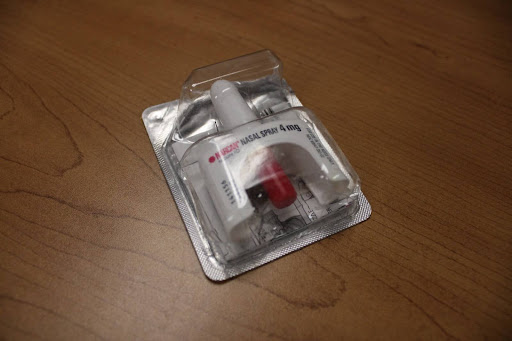FCPS puts a stop to crossing guards’ work
The long arm of the law recently put handcuffs on our crossing guard.
If you’ve seen long-time morning and afternoon regular Leonor Goral in a bright yellow slicker and a humongous red stop sign, you also know that Goral can’t untangle the traffic that snarls the intersection in front of the school anymore.
The County is now requiring crossing guards like Goral to simply help students cross the street to get to school, rather than directing traffic.
Because crossing guards are not legally recognized/registered police officers, a long-standing federal regulation bars them from directing traffic. It was not, however, a lack of enforcement that led to the change in policy implementation.
“Some crossing guards are/[were] doing what they felt needed to be done,” said School Resource Officer Joe Plazio.
If an accident or similar situation occurs and a crossing guard directing traffic is involved, things may get complicated, legally. But things at WS are seeming to get complicated—regarding morning and afternoon traffic, that is.
Crossing guards are no longer allowed to direct any traffic, buses included. That means the buses are not able go through the intersection where the school crossing guard Goral has worked for more than 10 years, causing the busses to be rerouted. The buses, now having to come in and go out of one entrance, have to go through the senior parking lot, creating a mess out front. Students leaving the parking lot in afternoons are blocked by the buses, which congest the lot by backing up traffic. While some students do not feel impacted at all, others disagree.
“It’s really stupid,” said senior Hunter Barrineau. “[The] issue now is that all buses go one way, when they used to be able to go wherever they want – it’s a stupid idea.”
The bus issue and crossing guard regulations are intertwined. Now that Goral cannot actually tell cars when and where to go, more and more parents are deciding to take their students to the stoplight up the road, creating the congestion with buses.
The volume of cars that previously passed the school during peak rush hour has dropped from 700-800 to only 375—in the mornings and afternoons.
“We were expecting a lot worse, but it’s working out,” said Safety & Security Specialist Mike Ukele. “[It’s] not a major problem. Parents are not dropping [their students] off on school grounds.”
Crossing guards, as well as experiencing changes in traffic patterns, had a change in uniform and equipment. Now they are required to wear a neon vest and carry a giant red stop sign to signal drivers to stop for students.
“I love the uniform change,” said Goral, who used to wear a uniform similar to one that a traffic cop would wear.
She said she feels more visible in the intersection, and with the aid of the stop sign, feels that no one will run through her with that in their way.
The traffic directing change, though, is seen as a negative. On several occasions, drivers have acted out against Goral, incidents including honking, one motorist shaking his fist at her and two angry people getting out of their cars.
Goral thinks the change is here to stay because she believes changing it back would be too confusing.
“I feel helpless. I can’t say a word to parents [regarding traffic patterns],” she said.



![According to the FCPS Restorative Justice Brochure, restorative justice comes with seven primary goals. Part of building the welcoming community comes through the class circle process. “It’s voluntary and everything that is said there is confidential,” said counselor Monica Hayes. “It’s the beginning of those [strong] relationships [in the community].”](https://theoracleonline.org/wp-content/uploads/2024/04/unnamed-28.png)







